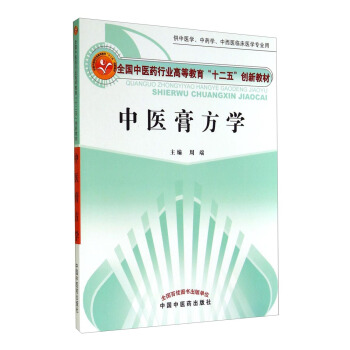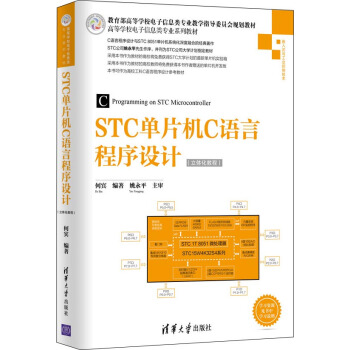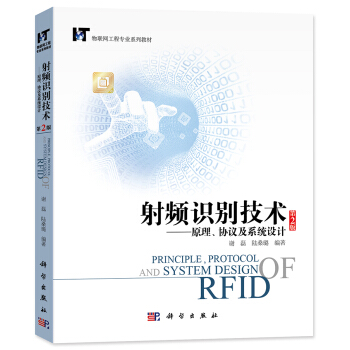![数学与金融经典教材:统计理论(影印版) [Theory of Statistics]](https://pic.windowsfront.com/11352184/rBEhVlKCz9IIAAAAAAKCVQDmRjoAAFjMAJTktAAAoJt907.jpg)

具体描述
编辑推荐
After a brief review of elementary statistical theory, the coverage of thesubject matter begins with a detailed treatment of parametric statisticalmodels as motivated by DeFinetti's representation theorem for exchangeablerandom variables (Chapter l). In addition, Dirichlet processes and othertailfree processes are presented as examples of infinite-dimensional param-eters. Chapter 2 introduces sufficient statistics from both Bayesian andnon-Bayesian viewpoints. Exponential families are discussed here becauseof the important role sufficiency plays in these models. Also, the conceptof iriformation is introduced together with its relationship to sufficiency.A representation theorem is given for general distributions based on suffi-cient statistics. Decision theory is the subject of Chapter 3, which includesdiscussions of admissibility and minimaxity. Section 3.3 presents an ax-iomatic derivation of Bayesian decision theory, including the use of condi-tional probability. Chapter 4 covers hypothesis testing, including unbiasedtests, P-values, and Bayes factors. We highlight the contrasts between thetraditional "uniformly most powerful" (UMP) approach to testing and de-cision theoretic approaches (both Bayesian and classical). In particular, wesee how the asymmetric treatment of hypotheses and alternatives in theUMP approach accounts for much of the difference. Point and set estima-tion are the topics of Chapter 5. This includes unbiased and maximum like-lihood estimation as well as confidence, prediction, and tolerance sets. Wealso introduce robust estimation and the bootstrap. Equivariant decisionrules are covered in Chapter 6. In Section 6.2.2, we debunk the commonmisconception of equivariant rules as means for preserving decisions un-der changes of measurement scale. Large sample theory is the subject ofChapter 7. This includes asymptotic properties of sample quantiles, maxi-mum likelihood estimators, robust estimators, and posterior distributions.The last two chapters cover situations in which the random variables arenot modeled as being exchangeable. Hierarchical models (Chapter 8) areuseful for data arrays. Here, the parameters of the model can be modeled as exchangeable while the observables are only partially exchangeable. We introduce the popular computational tool known as Markov chain MonteOarlo, Gibbs sampling, or successive substitution sampling, which is very useful for fitting hierarchical models. Some topics in sequential analysis are presented in Chapter 9. These include classical tests, Bayesian decisions, confidence sets, and the issue of sampling to a foregone conclusion.
内容简介
《数学与金融经典教材:统计理论(影印版)》是一部经典的讲述统计理论的研究生教程,综合性强,内容涵盖:估计;检验;大样本理论,这些都是研究生要进入博士或者更高层次必须学习的预备知识。为了让读者具备更加强硬的数学背景和更广阔的理论知识,书中不仅给出了经典方法,也给出了贝叶斯推理知识。目次:概率模型;充分统计量;决策理论;假设检验;估计;等价;大样本理论;分层模型;序列分析;附录:测度与积分理论;概率论;数学定理;分布概述。《数学与金融经典教材:统计理论(影印版)》读者对象:概率统计、数学专业以及相关专业的高年级本科生、研究生和相关的科研人员。
内页插图
目录
PrefaceChapter 1: Probability Models
1.1 Background
1.1.1 General Concepts
1.1.2 Classical Statistics
1.1.3 Bayesian Statistics
1.2 Exchangeability
1.2.1 Distributional Symmetry
1.2.2 Frequency and Exchangeability
1.3 Parametric Models
1.3.1 Prior, Posterior, and Predictive Distributions
1.3.2 Improper Prior Distributions
1.3.3 Choosing Probability Distributions
1.4 DeFinetti's Representation Theorem
1.4.1 Understanding the Theorems
1.4.2 The Mathematical Statements
1.5 Proofs of DeFinetti's Theorem and Related Results
1.5.1 Strong Law of Large Numbers
1.5.2 The Bernoulli Case
1.5.3 The General Finite Case
1.5.4 The General Infinite Case
1.5.5 Formal Introduction to Parametric Models
1.6 Infinite-Dimensional Parameters
1.6.1 Dirichlet Processes
1.6.2 Tailfree Processes
Chapter 2: Sufflcient Statistics
2.1.1 Notational Overview
2.1.3 Minimal and Complete Sufficiency
2.1.4 Ancillarity
2.2 Exponential Families of Distributions
2.2.1 Basic Properties
2.2.2 Smoothness Properties
2.2.3 A Characterization Theorem
2.3.1 Fisher Information
2.3.2 Kullback-Leibler Information
2.3.3 Conditional Information
2.4 Extremal Families
2.4.1 The Main Results
2.4.2 Examples
Chapter 3: Decision Theory
3.1 Decision Problems
3.1.2 Elements of Bayesian Decision Theory
3.1.3 Elements of Classical Decision Theory
3.1.4 Summary
3.2 Classical Decision Theory
3.2.1 The Role of Sufficient Statistics
3.2.2 Admissibility
3.2.3 James-Stein Estimators
3.2.5 Complete Classes
3.3 Axiomatic Derivation of Decision Theory
3.3.1 Definitions and Axioms
3.3.2 Examples
3.3.3 The Main Theorems
3.3.4 Relation to Decision Theory
3.3.5 Proofs of the Main Theorems
3.3.6 State-Dependent Utility
Chapter 4: Hypothesis Testing
4.1 Introduction
4.1.1 A Special Kind of Decision Problem
4.1.2 Pure Significance Tests
4.2 Bayesian Solutions
4.2.1 Testing in General
4.2.2 Bayes Factors
4.3 Most Powerful Tests
4.3.1 Simple Hypotheses and Alternatives
4.3.2 Simple Hypotheses, Composite Alternatives
4.3.3 0ne-Sided Tests
4.3.4 Two-Sided Hypotheses
4.4 Unbiased Tests
4.4.1 General Results
Chapter 5: E8timation
Chapter 6: Equivariance
Chapter 7: Large Sample Theory
Chapter 8: Hierarchical Models
chapter 9: sequential analysis
appendix a: measure and integration theory
appendix b: probability theory
appendix c: mathematical theorems not proven here
appendix d: summary of distributions
references
notation and abbreviation index
name index
subject index
前言/序言
用户评价
在我看来,一本好的金融教材,不仅仅是知识的传递,更是一种思维方式的启迪。我是一位金融从业者,多年的工作经验让我深刻体会到,在信息爆炸的时代,如何从海量的数据中提炼出有价值的洞察,以及如何做出更明智的决策,是成功的关键。而我坚信,统计学是实现这一目标不可或缺的工具。这本书的“统计理论”这个主题,以及“经典教材”的定位,让我对它充满了期待。我希望这本书能够系统地讲解统计学的基本原理,包括概率论、数理统计等,并且能够详细阐述这些原理在金融领域的具体应用。我特别关注书中对各种统计模型的介绍,例如,在风险管理中如何应用统计模型来评估 VaR(在险价值),在资产定价中如何利用统计方法来构建因子模型,以及在投资组合优化中如何运用统计学原理来分散风险。我希望这本书能提供一些深入的分析,让我能够理解这些模型背后的逻辑,并学会如何根据不同的金融场景选择和应用合适的统计方法。
评分坦白说,我是一个对金融市场表面繁华之下隐藏的数学逻辑非常着迷的人。我总觉得,那些令人眼花缭乱的金融产品和波动莫测的市场,背后一定存在着一套严谨的数学规律在支撑。我本身是数学专业的背景,对统计学并不陌生,但一直以来,总觉得在将这些理论知识应用于金融领域时,缺少一个清晰的桥梁。这本书的书名“数学与金融经典教材:统计理论”立刻抓住了我的眼球,这正是我一直在寻找的那座连接数学与金融的桥梁。我非常期待这本书能够深入浅出地讲解统计学的核心概念,并且能够提供丰富的金融应用案例。我希望它能涵盖一些我熟悉但从未深入探讨过的领域,比如模型的检验、假设的设定,以及如何处理金融数据中的特殊性,比如非平稳性、异方差性等等。我更看重的是书中对于理论的逻辑推导和数学证明的严谨性,作为数学专业出身的我,享受的是那种步步为营、严丝合缝的论证过程。如果这本书能够提供让我眼前一亮的洞见,或者能够帮助我建立起一套全新的金融建模思路,那么它将是我的案头必备。
评分这本书的封面和标题,单单是“数学与金融经典教材”这几个字,就足以让任何一个对量化金融或者数学建模感兴趣的人心头一动。我是在一个偶然的机会,在一个知名的学术书店里翻阅到的,当时就被它厚重的纸张和印刷质量吸引住了,感觉这就是一本值得珍藏的“老炮儿”。拿到手里沉甸甸的,让人觉得里面蕴含着实在的知识。我一直觉得,一本好的教材,不仅在于内容的深度,更在于它是否能激发读者的求知欲,能否将枯燥的数学理论用一种引人入胜的方式呈现出来。这本书给我的第一印象就是,它拥有这种潜力。我尤其期待书中对一些基础统计概念的深入讲解,比如概率分布、假设检验、回归分析等等,我希望它能不仅仅是概念的罗列,而是能够解释这些理论的来龙去脉,以及它们在实际金融问题中是如何被应用的。这本书是否能做到这一点,将是我衡量它价值的重要标准。我是一个喜欢刨根问底的人,所以对书中那些“为什么”的解答特别在意,希望它能提供清晰的推导过程和直观的解释,让我不仅知其然,更能知其所以然。
评分我是一位对金融市场有着敏锐洞察力的经验人士,从业多年,深感理论知识的不足已经成为我进一步提升的瓶颈。尤其是在面对日益复杂的金融衍生品和不断变化的宏观经济环境时,仅仅依靠经验已经显得力不从心。因此,我一直在寻找一本能够系统梳理统计理论,并且能够与金融实践紧密结合的教材。这本书的出现,恰好满足了我的需求。我之所以选择影印版,是因为它保留了原版最纯粹的面貌,我相信其中蕴含的学术价值是经过时间检验的。我非常期待书中能够对一些高级统计模型进行深入讲解,例如面板数据模型、非参数统计方法,甚至是机器学习在金融领域的应用。我希望这些讲解不仅仅停留在公式层面,更能提供对模型假设、模型选择以及模型解释的细致分析,并且能结合具体的金融应用场景,让我能够将学到的知识立即应用到我的工作中。我特别关注书中对于“统计推断”的阐述,在我看来,这是从数据中提取有价值信息,并做出可靠决策的关键。如果这本书能够帮助我提升统计推断的能力,那么它将对我的职业发展产生深远的影响。
评分这本书对我来说,更像是一次对金融世界底层逻辑的探索之旅。我一直认为,金融市场的波动并非随机,而是由各种复杂的因素相互作用的结果,而统计学正是理解和量化这些复杂性的有力工具。我是一名对金融领域充满好奇的在校大学生,虽然接触过一些基础的统计学知识,但总感觉零散且不够深入。当我看到这本书的书名时,我立刻被它所吸引,特别是“数学与金融经典教材”这几个字,让我觉得它蕴含着深厚的学术积淀和前沿的金融应用。我期待这本书能够为我揭示统计理论在金融分析中的真正力量,例如如何利用统计模型来预测市场趋势,如何进行风险管理,以及如何构建投资组合。我希望它能提供清晰的理论推导,并辅以生动的案例分析,让我能够将抽象的数学概念与真实的金融场景联系起来。我尤其关心书中对于数据分析方法论的讲解,比如如何选择合适的统计模型,如何检验模型的有效性,以及如何解释分析结果的金融意义。如果这本书能够帮助我建立起一套完整的金融数据分析思维框架,那么它将是我学习道路上的一笔宝贵财富。
评分这本书在我眼中,是一扇通往金融数据分析世界的大门。我是一名对金融领域充满向往的计算机科学专业的学生,我深知数据在现代金融中的重要性,也清楚统计学是理解和分析海量金融数据的关键。我之前接触过一些关于数据挖掘和机器学习的课程,但总觉得在统计理论这个基础层面上,还有很多欠缺。这本书的“统计理论”这个标题,让我觉得它能够填补我知识体系中的这个空白。我非常期待它能够清晰地介绍各种统计分布、参数估计、假设检验等基本概念,并且能够深入讲解一些在金融领域常用的统计模型,比如回归分析、时间序列模型,甚至是一些更高级的统计方法。我希望这本书能不仅仅停留在理论层面,更能提供一些关于如何用编程语言(例如R或者Python)来实现这些统计模型的指导,以及如何解释分析结果在金融场景下的实际意义。我个人比较偏好逻辑清晰、条理分明的讲解方式,并且希望书中能够提供一些练习题,让我能够通过实践来巩固所学的知识。
评分我被这本书的“数学与金融”这个组合深深吸引。我本身是一个对金融市场及其运作机制充满好奇的人,但同时也对数学在其中的应用感到非常着迷。我总觉得,金融市场的许多复杂现象,都可以用数学语言来描述和解释。我之前接触过一些金融入门的读物,但往往在深入分析时,总会遇到一些统计学上的障碍。这本书的“统计理论”这个标题,正是我所需要的。我期待它能够为我打开一扇新的窗户,让我能够用更严谨、更科学的眼光去审视金融市场。我希望这本书能够从基础的概率统计讲起,逐步深入到一些在金融领域应用广泛的统计模型。我尤其关心书中是否能够提供关于“随机过程”的介绍,因为我认为这是理解金融市场动态演变的关键。另外,我希望书中能包含一些关于“时间序列分析”的内容,因为金融市场的数据往往具有时间依赖性。如果这本书能帮助我建立起一个坚实的统计理论基础,并且让我能够理解这些理论如何应用于解决实际的金融问题,那么它对我来说将是无价的。
评分我购买这本书纯粹是出于个人兴趣。我对金融市场有着浓厚的兴趣,但一直觉得自己的知识体系中缺乏一个坚实的数学基础。每次在财经新闻里看到关于市场分析、风险评估之类的报道,总觉得有很多深层次的逻辑我无法完全理解,而这些往往都离不开统计学的原理。我希望通过阅读这本书,能够系统地学习统计学的基础知识,尤其是那些与金融领域密切相关的部分。我不太追求那种“速成”的学习方法,更倾向于一步一个脚印地打牢基础。因此,我非常看重教材的逻辑严谨性和内容的深度。这本书的标题和副标题,尤其是“经典教材”和“影印版”,给我一种它蕴含着丰富且经过时间检验的知识体系的期待。我希望能从这本书中学到一些经典的统计模型,比如时间序列分析,或者贝叶斯统计等,了解它们是如何被发展起来的,以及在金融领域的具体应用案例。我个人对数学的接受度还可以,但对于过于抽象和脱离实际的理论讲解会感到乏味,所以希望这本书能在理论深度和实际应用之间找到一个很好的平衡点。
评分我对这本书的期待,在于它能否帮助我突破思维的局限,用一种更加量化和严谨的方式来理解金融世界。我是一名对金融市场充满热情但又深感理论基础薄弱的普通投资者。在日常的投资决策中,我常常感到自己过于依赖直觉和经验,而缺乏一种更具科学性的分析工具。这本书的“统计理论”这个核心内容,以及“经典教材”的定位,让我觉得它是一本能够帮助我提升分析能力,并做出更理性决策的有力武器。我希望书中能够讲解一些基础但至关重要的统计概念,例如正态分布、泊湳分布等,并解释它们在金融市场中的意义。我更期待书中能介绍一些在风险管理和资产配置中常用的统计方法,比如如何利用统计模型来衡量和管理投资风险,如何通过统计分析来优化资产组合的配置。我希望这些讲解能够清晰易懂,并且能够提供一些实用的技巧和方法,让我能够将学到的知识直接应用到我的投资实践中。如果这本书能让我摆脱“拍脑袋”式的决策,走向一种更加科学、更加自信的投资之路,那么它将是我的明灯。
评分我是一名研究生,正在攻读金融工程专业,学校的课程设置里有大量的统计学和概率论的课程。之前也接触过一些国内的教材,总觉得在理论的严谨性和深度上,和国际顶尖的水平还有一些差距。听说“统计理论(影印版)”是国外一本非常有名的教材,很多高校的金融数学专业都会参考,所以就特意找了来。拿到这本书,首先被它的排版吸引了,虽然是影印版,但清晰度很高,纸张的质感也很好,拿在手里很舒服。我之前看一些国内教材,有时候会觉得逻辑跳跃比较大,或者讲解不够透彻,希望这本书能在这方面有所不同。我特别想看看它对核心统计概念是如何阐述的,比如中心极定理、大数定律这些基础,它们是理解很多高级模型的基础。还有回归分析,这在金融建模中是必不可少的工具,希望这本书能提供一些更深刻的见解,不仅仅是公式的推导,更重要的是对模型假设、误差分析以及如何解释回归结果的深入探讨。如果这本书能帮助我建立起扎实的统计理论基础,并且理解这些理论如何应用于解决实际的金融问题,那么它对我来说就是一本不可多得的宝藏。
评分评价状态
评分数学系的学生需要温故知新
评分评价状态
评分质量不错。。。。。。。。。。。。
评分数学与金融经典教材:统计理论(影印版)
评分数学系的学生需要温故知新
评分整体不错,是正品,还会继续购买,请尽快更新书单。
评分活动时买的,还是挺划算的,给个好评!
评分统计理论的好书,介绍全面
相关图书
本站所有内容均为互联网搜索引擎提供的公开搜索信息,本站不存储任何数据与内容,任何内容与数据均与本站无关,如有需要请联系相关搜索引擎包括但不限于百度,google,bing,sogou 等,本站所有链接都为正版商品购买链接。
© 2025 windowsfront.com All Rights Reserved. 静流书站 版权所有

![诊断听力学/高等院校听力学专业系列教材 [Diagnostic Audiology] pdf epub mobi 电子书 下载](https://pic.windowsfront.com/11363210/rBEhWVKh2WIIAAAAAANjTfWbhjYAAGclwM3ZToAA2Nl248.jpg)

![劳动法与社会保障法 原理、材料与案例 [Labour Law and Social Security Law:Theories, Materials and Cases] pdf epub mobi 电子书 下载](https://pic.windowsfront.com/11667933/55136d0fNe14d0846.jpg)
![现代光学设计方法(第2版)/工业和信息化部“十二五”规划教材 [Modern Optical Design(2nd Edition)] pdf epub mobi 电子书 下载](https://pic.windowsfront.com/11685779/554c8383N482b46fa.jpg)

![Python基础教程 [Python Progiamming] pdf epub mobi 电子书 下载](https://pic.windowsfront.com/11758513/55e3ffaeN0ef36e3a.jpg)
![光的故事 从原子到星系 [The Story of Light Form Atoms to Galaxies] pdf epub mobi 电子书 下载](https://pic.windowsfront.com/11771210/56260e29Nb74c2cbe.jpg)












